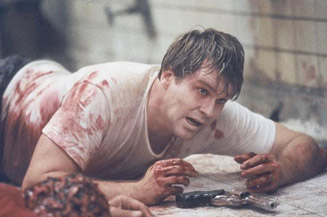|
|
What Went Right: SawBy Shalimar SahotaFebruary 9, 2012
Saw works because Whannell’s script is absolute dynamite with a unique concept. A lot of the time, we the audience are as clueless as the main characters. It keeps you guessing with many twists and turns, and audiences love their surprise twisty endings, which often contribute to hot word-of-mouth. The final eight minutes are absolutely phenomenal, with a reveal that causes the viewer to reassess the whole film. Only then do we realize that we’ve been had. Also unlike most horror/thriller films where we just accept that the crazed killer is crazy (“motives are incidental” are they?), Jigsaw was dangerously different and an integral part to Saw’s success. Although he’s rarely seen in the film, his presence is felt throughout, via his voice and that tricycle-riding puppet. “Most people are so ungrateful to be alive,” says Jigsaw to one of his victims. He places his victims in these games in the hope that their experience will help them gain a different outlook on life. Unfortunately, most of them don’t survive long enough to change that outlook. Those that do must pay a price for their freedom. As we’re told, Jigsaw “finds ways for his victims to kill themselves.” It’s debatable, but a good chunk of his victims are sinners and this is also interesting. Who exactly are the audience supposed to side with here? The immoral victim? Or Jigsaw? Well, they’re both in the wrong, right? The character of Detective Sing would be the main exception here, but one could argue that these people deserve to die and that Jigsaw is just trying to rehabilitate them. He wants his victims to appreciate the life that they have. Should they fail their game, what’s the loss? Might as well give Jigsaw a police badge and tell him to carry on administering his own brand of justice. Okay, I don’t really believe that, but the film splits audiences on Jigsaw and his motives. While some may see him as a sympathetic serial killer, it’s worth noting that he will kill if he has to. In one scene, Jigsaw attempts to kill two characters through "his own" actions. Another thing that separates Saw is that the killer actually manages to get away with it! How many times does that happen?
[ View other columns by Shalimar Sahota ]
[ View other What Went Right columns ]
[ Email this column ]
|

|
|
|

|
Friday, November 1, 2024
© 2024 Box Office Prophets, a division of One Of Us, Inc.


